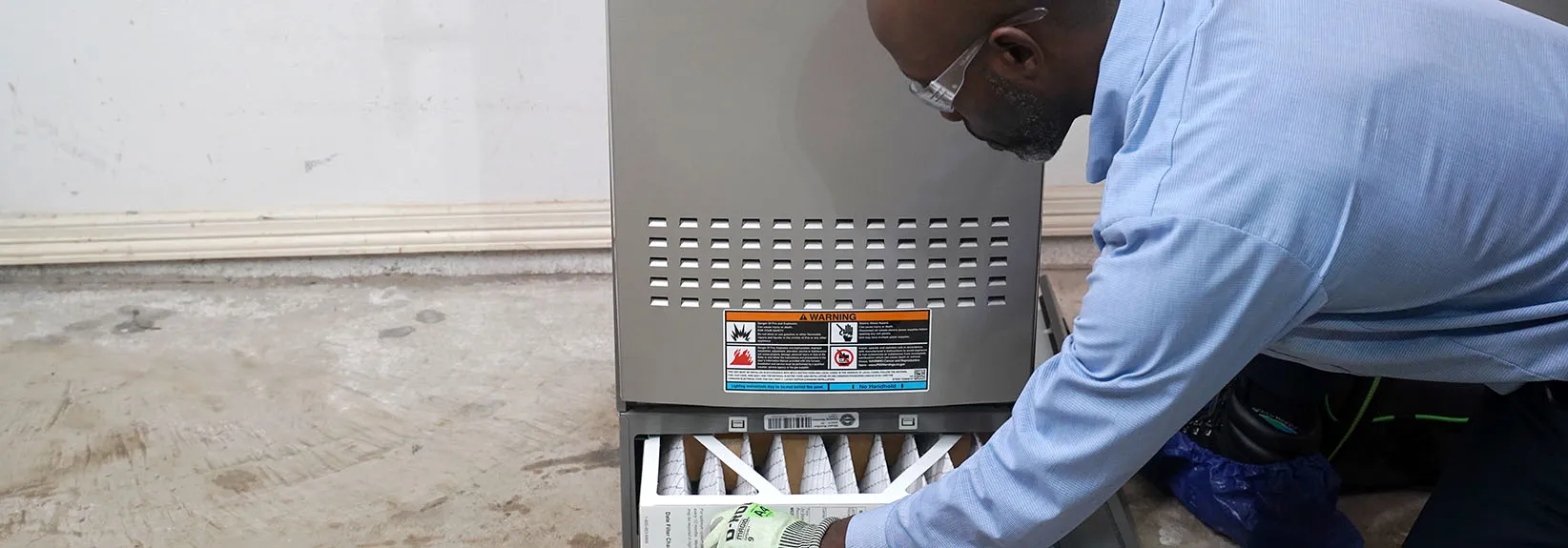How to Find Your Furnace and Change Your Furnace Filter
Many homeowners don’t know a lot about their HVAC system, such as where key equipment like the furnace is located. If you don’t know where the furnace is, you can’t perform routine furnace maintenance tasks like inspecting the furnace air filter. This and other simple chores can enhance your furnace’s energy efficiency. It’ll also help lower the risk of damage or a malfunction.
Where Is the Furnace?
Most furnaces are found in the center of your home, either in a special utility closet or down in the basement. If your home doesn’t have a basement, it may also be in a crawl space or the attic. You may find other equipment like the water heater or your washing machine close by. Once you’ve found where your furnace is, the next step is to locate the furnace filter.Where Is My Furnace Filter Located?
You’ll frequently find the air filter inside the blower compartment, which is accessible through a metal door or hatch on the lower half of the furnace. It could also be in a sliding compartment next to the air handler component of your furnace or on a rack kept on the furnace’s side. It will be located somewhere where it can collect dust, pollen and other airborne particles as they make their way through your HVAC system. Over time, the furnace filter collects more and more particles. At a certain point it will restrict airflow and can affect your home’s indoor air quality as well as your HVAC system’s total efficiency. By consistently cleaning or replacing the filter, you’ll keep everything working more effectively.How Do I Change the Air Filter in My Furnace?
Fortunately, you don’t need years of HVAC experience to know how to change a furnace filter. In fact, it’s one of the simplest tasks you can do to help encourage the best performance from your HVAC system. Here are a few things to keep in mind before you start:-
- Make sure you check the filter’s size so the replacement air filter matches.
-
- Shut the furnace’s power off before you access the air filter.
-
- Slowly pull the filter out so the housing isn’t damaged or knocked out of place.
-
- Finally, look on the new filter for an arrow indicating how the filter should be oriented before installing it into your furnace.
Should I Change My Furnace Filter Every Month?
Ultimately, knowing how often to change your furnace filter depends on several things. Start with the model of the filter itself, as more efficient filters generally last longer. You’ll also want to review your indoor air quality needs, the size of your family and number of pets as well as local pollution levels. Basic filters suggest replacement every 1-2 months, or as short as 20-45 days each if you have multiple pets and someone in the house has allergies.Does It Matter What Furnace Filter You Use?
The quality of your furnace filter may have a large impact on your HVAC system’s overall efficiency as well as your home’s indoor air quality. The ideal way to check the quality of your furnace filter is its MERV rating. This stands for the Minimum Efficiency Reporting Value, and indicates the filter’s effectiveness at reducing the number of airborne particles in your home. The [bigger|higher} the MERV rating, the better the filter will be. Ratings can be on a scale of 1-20, but this doesn’t mean you need to find a furnace filter with a 20 MERV rating. In fact, many filters with ratings above 13 are often designed for hospitals or other buildings that need the safest, most hygienic conditions possible.What Happens if I Forget to Change My Furnace Filter?
Neglecting to change your furnace filter isn’t the end of the world, but it can reduce how effective your HVAC system is. Furnaces rely on unobstructed airflow for efficient heating, and a clogged filter can slow that down. The longer you go without replacing it, however, the more likely problems can develop that will require furnace repair. Here are a few of the most common:-
- The furnace overheats: Without steady airflow, the temperature in your furnace can steadily increase. Safety components should shut off the furnace when it detects overheating, but this can keep happening until the filter is replaced.
-
- Your HVAC system starts short cycling: Short cycling is when your equipment starts and stops constantly. This adds more wear and tear, which shortens your system’s life span.
-
- The air conditioner’s cooling coil freezes: The air conditioner also needs steady airflow. Without it, the refrigerant coils can get too cold and freeze over.
-
- Your HVAC system stops working: When your HVAC system runs too long without functional airflow, it could lead to a piece of equipment failing entirely.
